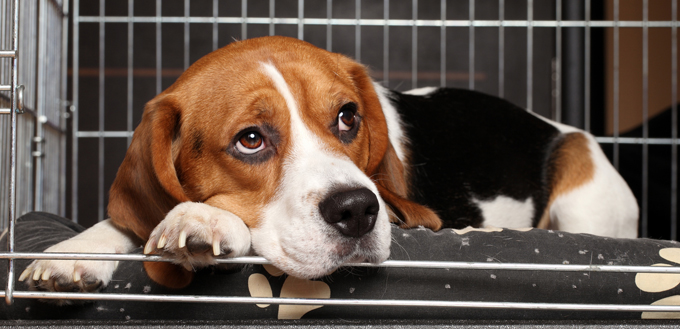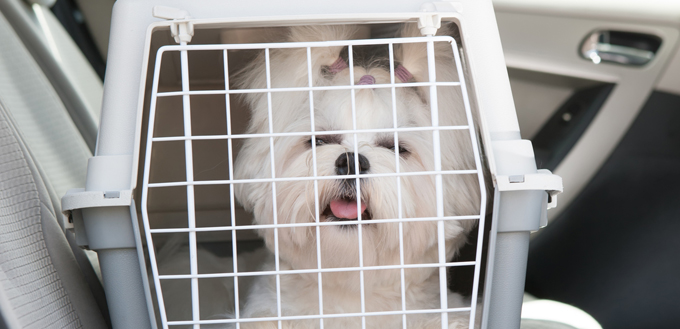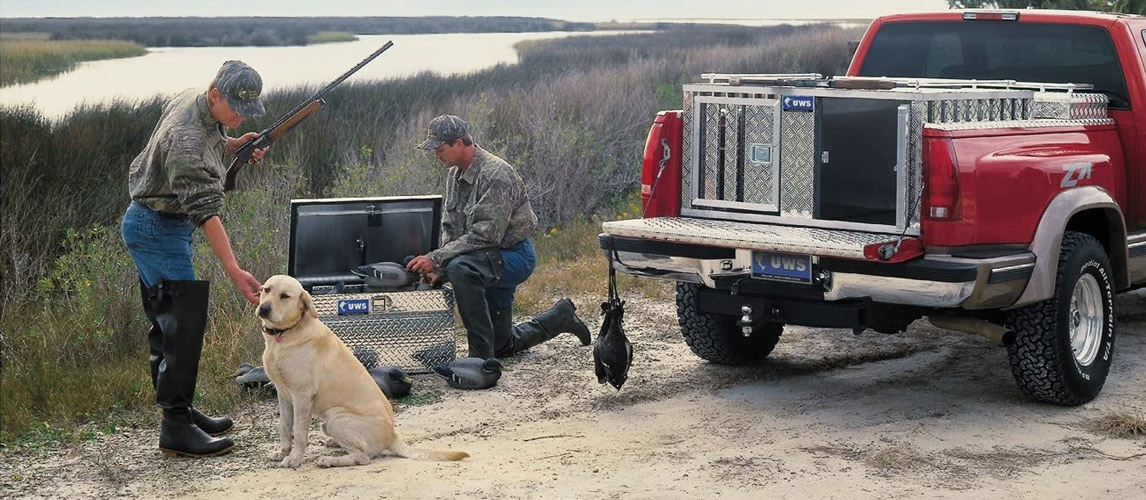Crate training is an important aspect of pet care, especially among dogs. This is because they are inherently den animals. Just as we would like to have our very own personal space, dogs, too would love to have their own. And because a dog crate is not exactly what you can call a den, you will have to train them to love this as their own. And training should start with puppyhood. Here’s how.
Related Post: Dog Crates
Introduce Your Young Pup to its Crate
This is the most crucial step in the entire crate training process. The most important thing to remember is for your puppy to associate the crate to something that is very pleasant, very safe, and very comfortable. That being said, you’re not supposed to force your puppy or even shove the young pooch right inside the crate and lock it immediately. What you want to do is to decorate the crate with a lot of love – meaning, put your pup’s favorite plush bedding as well as toys inside. If it sees these, it will somehow get the idea that the crate is going to be its new home.
Place the crate somewhere your pup can see you and the rest of your family. Make sure the crate’s door is wide open and secured so that it will not suddenly close, create a loud noise, and startle your puppy. Just leave the crate like this for a few days. You don’t have to do anything else. This allows your pup to explore it inside out. The idea is for it to recognize the crate as a normal part of its everyday existence.

For some puppies, they get the idea immediately. Some will go right inside the crate, sniff around, and, if they sense their favorite bedding there, they’d settle right in. But if your young pooch is not like this, then you will have to aid it in exploring the crate. Again, do this only if after a few days the puppy remains uninterested in the crate.
Bring your puppy to the crate just outside the open door. Talk to it in a calm and very reassuring voice. Entice it to enter the crate by dropping treats or morsels of its favorite puppy chow from just the outside of the crate’s door and all the way towards the inside, just beyond the door. You can also toss its favorite toy inside. Do this for a couple of days even up to a week. Take your cue from your puppy. The behavior you’d want to see is for it to walk calmly inside the crate. Remember, don’t push it.
Related Post: Chew Toys for Puppies
Start Feeding Your Pup Inside the Crate
Once your pup is confident about going inside its crate, you can start feeding it inside the crate. The trick is to put the food dish in steps, moving away from the open door until such time that it can already put all of its body inside the crate. Leave the door open at this time. You want your pup to feel secure first feeding inside the crate.
By the time your young dog readily enters the crate the moment you put food in its bowl, you can start closing the door gently. Don’t go anywhere since you need to open the door immediately once it is done eating. Do this about one or two days. On the 3rd day, you can leave the door closed a bit longer, say 2 minutes longer after your pup is finished eating. Just stay right outside the crate’s door. As you progress, you are going to lengthen the time the door remains closed after feeding.
Here’s the clincher. If it whines, do not open the door immediately. Wait for it to stop whining before opening the door, lest you teach your pup that whining will open the door of the crate. So, you’ll be inadvertently reinforcing a behavior you don’t want.
Related Post: Dog Bowls
Extend the Time Your Pup is Inside the Crate a Bit Longer
Teach your puppy to enter the crate even when there is no food inside. To do this, you will need a verbal cue plus the use of puppy treats to entice it to go inside. Once it is in, praise it and give your pup its treat. Now close the door and just sit there with your young pooch for about 10 minutes. Then leave out of sight for a couple of minutes then return. Sit right outside the door of the crate for another 10 minutes and then open the door. This is one cycle. You need to repeat this cycle several times every day. However, you will have to gradually increase the length of time you’re away from your pup’s sight until you’ve reached 30 minutes and your pup is still calm and secure inside its crate.
For those hot summer months, you should also consider purchasing a dog crate fan.

Train Your Puppy to be in the Crate When you Leave and While You’re Sleeping
If your crate training in the preceding steps proceeded smoothly, this 4th step should be relatively easy as you’ll only be training your pup to stay inside its crate while you’re away for the day. The key here is to crate your pup about 15 to 20 minutes before you leave so that it will not be an abrupt separation. Similarly, when you arrive, your pup will be so excited to see you, don’t make the mistake of showing you’re excited, too. Proceed as calmly as possible to the crate and wait for it to settle down before opening the crate and letting your young pooch out. Here’s the thing, you’re not supposed to leave your young pup inside the crate for longer than 5 hours during the day, lest it learns that being inside a crate is essentially being left alone.
During the night, you can place the crate beside your bed. But, make sure it has done its deed first. As your puppy grows comfortable sleeping inside its crate beside your bed, you can gradually move the crate further away from your bed until you can safely place it in a more preferred location.
Related Post: Dog Crate End Tables
Crate training puppies is easy if you follow these simple steps. The key is patience and to make the experience positive and rewarding for your puppy.
Sources:
- Crate Training Your Dog Or Puppy, Animal Humane Society
- Sherry Woodard, Crate Training: The Benefits for You and Your Dog, Best Friends Animal Society
- Crate Training Your Dog, The MSPCA–Angell







